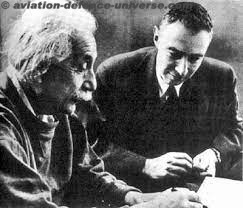
- German War Cemetery at Somme stands silent testimony to the offensive
By Sangeeta Saxena

New Delhi/Somme. 21 March 2020. Scars of war embedded in history amidst the silent green plains are evident all through the drive from the French city of Amiens to the battle fields of Somme. My battle track of the biggest tank battle zone of World War I in the summer of 2019 went live today when I recalled the day on which Germany began its major offensive on the Western Front near the Somme River in France.
More popularly called the Spring Offensive, or Kaiserschlacht (“Kaiser’s Battle”), also known as the Ludendorff Offensive, was a series of German attacks along the Western Front during the First World War, beginning on 21 March 1918. The Germans had realised that their only remaining chance of victory was to defeat the Allies before the United States could fully deploy their resources. The German Army had gained a temporary advantage in numbers as nearly 50 divisions had been freed by the Russian withdrawal from the war with the Treaty of Brest-Litovsk.
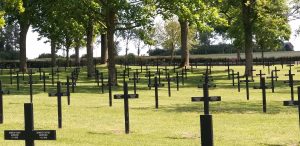
On 21 March 1918, the Germans launched a big offensive against the British Fifth Army and the right wing of the British Third Army. The artillery bombardment began at 4.40am on March 21. The bombardment targets were over an area of 150 square miles, the biggest barrage of the entire war. Over 1,100,000 shells were fired in five hours.
The German armies involved were—from north to south—the Seventeenth Army under Otto von Below, the Second Army under Georg von der Marwitz and the Eighteenth Army under Oskar von Hutier, with a Corps (Gruppe Gayl) from the Seventh Army supporting Hutier’s attack. Although the British had learned the approximate time and location of the offensive, the weight of the attack and of the preliminary bombardment was an unpleasant surprise. The Germans were also fortunate in that the morning of the attack was foggy, allowing the stormtroopers leading the attack to penetrate deep into the British positions undetected.
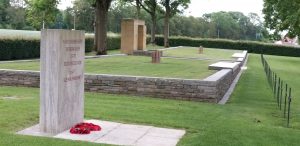
By the end of the first day, the British had lost 7,512 dead and 10,000 wounded and the Germans had broken through at several points on the front of the British Fifth Army. After two days the Fifth Army was in full retreat. As they fell back, many of the isolated “redoubts” were left to be surrounded and overwhelmed by the following German infantry. The right wing of Third Army became separated from the retreating Fifth Army, and also retreated to avoid being outflanked.
Ludendorff failed to follow the correct stormtroop tactics, as described above. His lack of a coherent strategy to accompany the new tactics was expressed in a remark to one of his Army Group commanders, Rupprecht, Crown Prince of Bavaria, in which he stated, “We chop a hole. The rest follows.” Ludendorff’s dilemma was that the most important parts of the Allied line were also the most strongly held. Much of the German advance was achieved where it was not strategically significant. Because of this, Ludendorff continually exhausted his forces by attacking strongly entrenched British units. At Arras on 28 March, he launched a hastily prepared attack (Operation Mars) against the left wing of the British Third Army, to try to widen the breach in the Allied lines, and was repulsed.
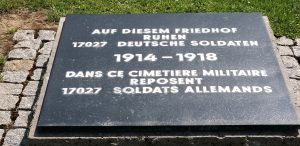
The German breakthrough had occurred just to the north of the boundary between the French and British armies. The French commander-in-chief, General Pétain, sent reinforcements to the sector too slowly in the opinion of the British commander-in-chief, Field Marshal Haig, and the British government, though the historian Elizabeth Greenhalgh disputes this, arguing that Petain sent the six additional divisions quicker than had been arranged with Haig – in 2 days instead of 4 – and arranging for extra divisions several times – 12 divisions on 23 March and 13 on the 25/26 March – before requests came in from Haig. The Allies reacted by appointing the French General Ferdinand Foch to coordinate all Allied activity in France, and subsequently as commander-in-chief of all Allied forces everywhere.
The success of Operation Michael led German infantry to advance too far from its supply bases and railheads. The stormtrooper units leading the advance carried supplies for only a few days, to avoid being overburdened, and relied on supplies delivered quickly from the rear. The advance was slowed by supply shortages, which gave Allied commanders more time to reinforce the threatened areas and to slow the advance still more. German supply difficulties were made worse by the direction of advance, which crossed the wasteland created during the Battle of the Somme in 1916 and by Operation Alberich, the German retirement to the Hindenburg Line from February to March 1917.
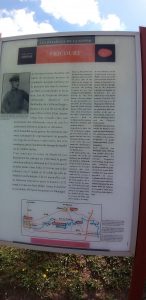
After a few days, the German advance began to falter, as the infantry became exhausted and it became increasingly difficult to move artillery and supplies forward to support them. Fresh British and Australian units were moved to the vital rail centre of Amiens and the defence began to stiffen. After fruitless attempts to capture Amiens, Ludendorff called off Operation Michael on 5 April. By the standards of the time, there had been a substantial advance. It was, however, of little value; a Pyrrhic victory in terms of the casualties suffered by the crack troops, as the vital positions of Amiens and Arras remained in Allied hands. The newly-won territory was difficult to traverse, as much of it consisted of the shell-torn wilderness left by the 1916 Battle of the Somme, and would later be difficult to defend against Allied counter-attacks.
The Allies lost nearly 255,000 men (British, British Empire and French). They also lost 1,300 artillery pieces and 200 tanks. All of this could be replaced, either from French and British factories or from American manpower. German troop losses were 239,000 men, many of them specialist shocktroops (Stoßtruppen) who were irreplaceable. In terms of morale, the initial German jubilation at the successful opening of the offensive soon turned to disappointment, as it became clear that the attack had not achieved decisive results.
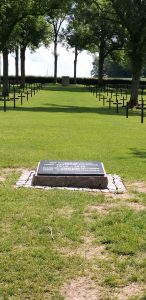
The First World War German cemetery at the Somme battlefield stands in silent testimony to the pages of military history written more than hundred years ago. Fricourt German war cemetery is near the village of Fricourt, near Albert, in the French département of the Somme. Most of the fallen were members of the Imperial German 2nd Army. Of the 17,000 burials, about 1,000 died in the autumn of 1914 and the ensuing trench warfare; about 10,000 during the Battle of the Somme (July-November 1916); and the final 6,000 in the Spring Offensive of 1918 and the ensuing Allied counter-attack, the Hundred Days Offensive.
The 2nd Army during World War I, fought on the Western Front and took part in the Schlieffen Plan offensive against France and Belgium in August 1914. Commanded by General Karl von Bülow, the 2nd Army’s mission was to support the 1st Army’s sweep around the left flank of the French Army and encircle Paris, bringing a rapid conclusion to the war.
2nd Army bore the brunt of the Allied attack in the Battle of the Somme. It had grown to such an extent that a decision was made to split it into two still-powerful armies. Therefore, 1st Army was reformed on 19 July 1916 from the right (northern) wing of the 2nd Army. The former commander of 2nd Army, General der Infanterie Fritz von Bulow, took command of 1st Army and 2nd Army got a new commander General der Artillerie Max von Gallwitz. Von Gallwitz was also installed as commander of Heeresgruppe Gallwitz – Somme to co-ordinate the actions of both armies on the Somme.
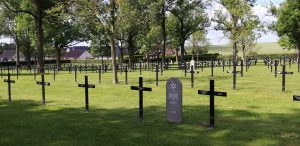
A large proportion of the German Army was wiped out during the joint Anglo-French offensive on the Somme and most of them are buried in the cemetery in Somme. Not a soul was there to visit the cemetery and had it not been for the selfie the author could have given no proof of her visit . A less popular destination than the other World War I cemeteries in Somme.
The cemetery was established by the French military authorities in 1920 and concentrates burials from “some 79 communes in the regions around Bapaume, Albert, Combles, the Ancre valley and Villers-Bretonneux”. About 5,000 of the burials are mostly in shared double graves; the remainder lie in four communal graves.
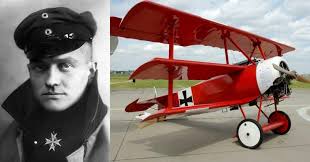
Among those buried there at one time was the famous German fighter pilot Manfred von Richthofen, the Red Baron, who was killed on 21 April 1918 from machine gun fire from Canadian Pilot Roy Brown who was chasing him or an Australian soldier firing from below, and buried with military honours by the Australians. Later his remains were transferred first to Fricourt, then to the Invalidenfriedhof Cemetery in Berlin, and finally to a family plot in Wiesbaden.
In 1929, the German War Graves Commission started working on the German military grave registration service and landscaping the cemetery. It received a new entrance with stairs and wrought-iron gate and trees and bushes were planted. The community graves got a verge made of natural stone and a planting with game roses. A wooden high cross served as a central mark; however a problem remained of a durable and long term marking for the graves. In 1939, the eruption of the Second World War saw a suspension of the Commission’s work.
After the conclusion of the French-German war grave agreement, from 19 July 1966 the German War Graves Commission could begin German military grave registration service with the final organization of the German military cemeteries in France dating from the First World War. Starting from 1977, the provisional wood grave markers were exchanged with those made of metal with raised names and dates, where possible. The German Federal Armed Forces took over the construction of the concrete foundations necessary for setting up the metal crosses, which were shifted mostly by participants in youth camps.
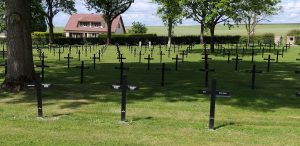
Some 5,057 soldiers are buried in single graves, with 114 remaining unknown. Four communal graves contain 11,970 burials. There are also 14 graves for Jewish soldiers, marked with a headstone instead of a cross. The Hebrew characters mean “XXX rests buried” and “their soul may be enwoven into the circle of the living persons.”
From the late 1960s to the early 1970s a fundamental change in the landscape gardening took place, which extended to the renewal of the hedge and the bricked edge of the community graves. New trees and shrubs were planted and the existing wooden high cross was replaced with one of forged steel.
The largest of the German cemeteries can be found between Vermandovillers and Foucaucourt-en-Santerre. The cemetery was built by the French in 1920 and over 22,000 German soldiers are buried in it, including 13,000 who lie in 15 mass graves.

































